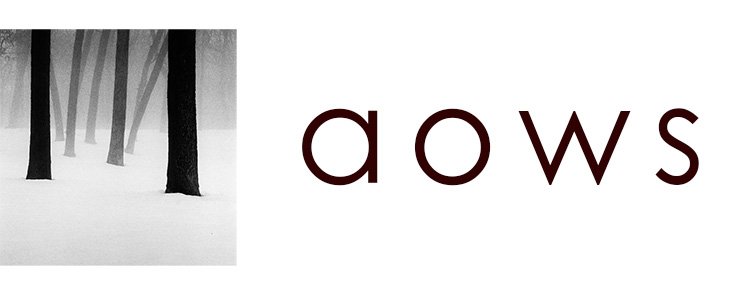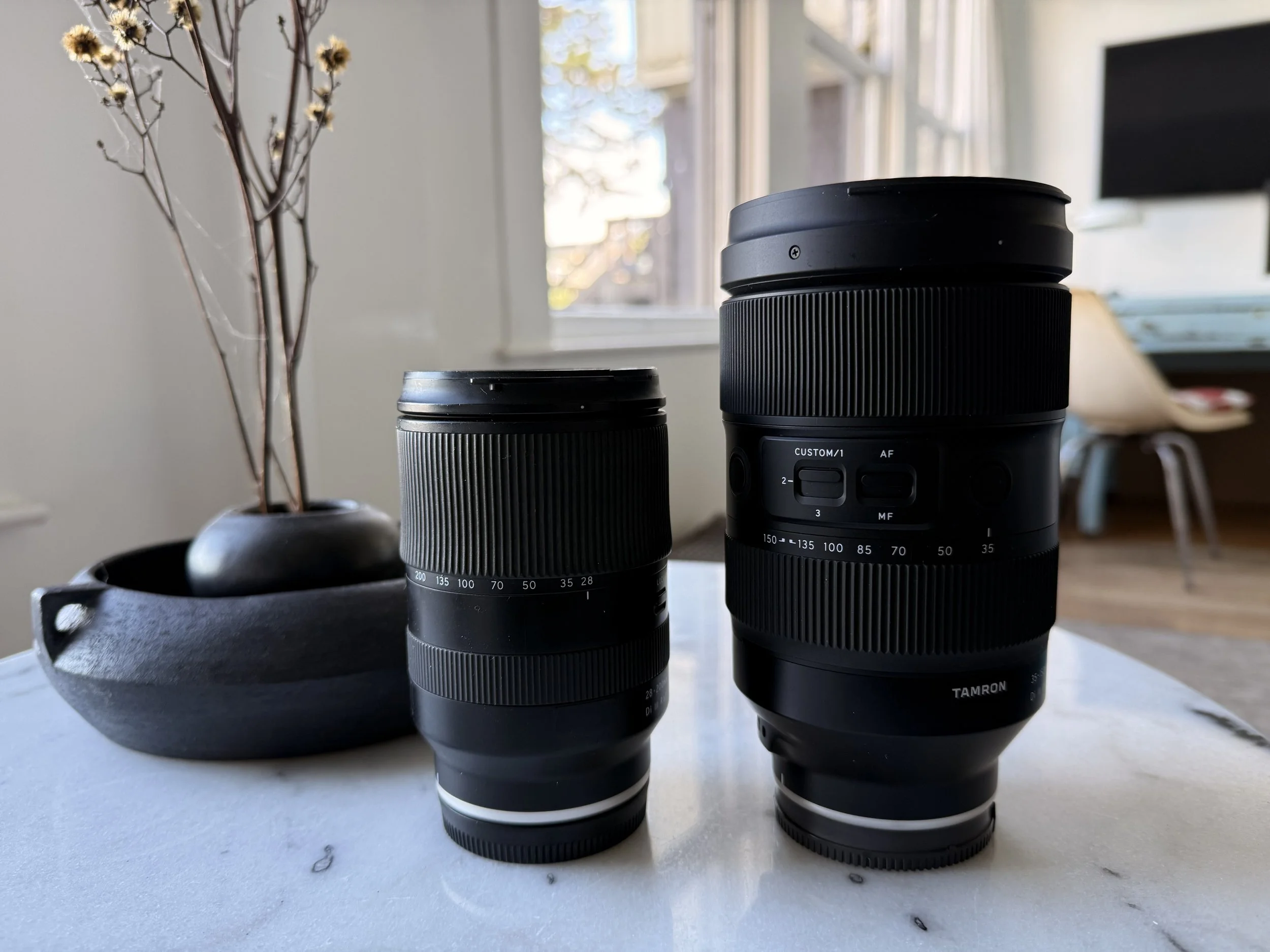The forecast had some rain for Death Valley National Park, so I immediately booked a campsite. I was hoping for some rare conditions in the park, and I did get some of that. The consequences were a bit unexpected, though.
journal
This lens might finally retire my beloved Tamron 28-200mm
For the last few months, I've been using the Tamron 35-150mm f/2-2.8. It's a wonderful lens, but it comes with serious drawbacks. Will it replace my all-time favorite Tamron 28-200mm f/2.8-5.6?
Frustration is unavoidable in photography
We all feel frustrated about our photography at some point. But the doubs and fears are normal and part of the process. We get to create not because we don't feel them, but despite them.
Photographing the ancient landscapes of Eastern California
I visit ancient places in Eastern California, both natural and man-made. Mono Lake, the ghost town of Bodie, Ancient Bristlecone Pine Forest, and the Alabama Hills.
I took a random exit and found photography heaven
It was supposed to be a travel day, driving to the next destination of my road trip across the West. But after waking up to some fog, something told me I should explore despite the long drive I had ahead of me. I'm sooo glad I did take the time to take unknown roads, because what I found was a photography heaven, one of the highlights of the whole trip.
Find photos anywhere with this simple exercise
When I'm not feeling inspired, I use this simple trick to get me and my camera out.
Stuck in my car during a storm
A bad storm comes to the Oregon Coast and I'm stuck. A good chance to answer some of your questions about the way I travel for photography.
Why I only shoot in Black and White (even in the fall!)
I get asked this question very often: why only black and white? Aren't you tempted to capture those beautiful fall colors?
I wasn't ready to leave
I have a hard time leaving the PNW. The days are beautiful and moody, very different from what's waiting for me further east. So even though I was supposed to be gone by now, I decide to give the Oregon Coast a couple more days.
I couldn't believe what I found in Central Oregon
I'm in Central Oregon where I'm supposed to pick up my new filters (to replace the ones I broke). But what I find there leaves speechless. Photographing some stunning landscapes in Central Oregon.
How to photograph a waterfall ~ from the Columbia River Gorge
The Columbia River Gorge is home to more than 70 waterfalls. It would take me weeks to even visit all of them, so in this video, I'll photograph just a handful. And while photographing a waterfall might seem pretty straightforward, I also want to share some tips.
Pushing it a bit too far at the Olympic Peninsula coast
I visit two of the most beautiful beaches in the Olympic Peninsula: Rialto and Second Beach. The locations are stunning... but the conditions couldn't be more treacherous. I struggle with the wind and the rain, and push it a little bit too far with the tides.
Life on the road: Moments from the PNW
A few magical moments and images from my days in the PNW.
How we make art matters
The story behind a piece of art can be as important, if not more, than the piece itself. How we make art matters, a lot.
Backpacking for the best view in Oregon
High in Oregon’s Central Cascades, I hike to Broken Top nine years after my first visit to this stunning spot. The view from the summit never fails to take my breath away. It’s a familiar place, yet every step reminds me how much has changed, both in the landscape and in myself.
How to make great photography inevitable
Mt Hood has played an important role in my photography career. Exploring these landscapes is what made me fall in love with the art, and they continue to fascinate me after all these years. Something compels me to keep coming back, to keep photographing this beautiful mountain and the stunning forests and lakes around it.
The tool I use all the time but rarely show you
I almost always carry a tripod with me, even if you don't see it in my videos. That's because it's holding my video camera! So you might understand why my tripod has become such a crucial tool in my work. And for the last couple of years, I've been using the Coman Zero Y carbon fiber tripod which I love. Let me tell you why.
One of the photos I thought I had lost forever.
So it does happen...
I panicked, a little bit.
They weren’t the most important photos and footage, but it wasn't easy to take them. I’d woken up at 5am and hiked (there’s no other way to describe walking in San Francisco) with two tripods and two big cameras and lenses on my back, while gaining almost 700 feet of elevation.
That’s why I was a little upset to find a cryptic “A7IV_3902.RSV” with zero bytes on the memory card, instead of the photos and videos I had made.
So it does happen, after all: memory cards get corrupted, or something like that.
After more than 3 years using a camera with dual memory card slots, I was about to find out if the feature was worth it. I inserted the second memory card into the laptop, and to my huge relief, there they were. All the photos and videos I had worked hard to make. Phew.
Look at that size difference 😲
Going big and heavy
I got two new lenses. Big, heavy, fat lenses. I’m still not sure why I did it. It’s not because I needed them; I didn’t.
My best guess is that I wanted a change. For the past five years, I’ve taken the vast majority of my photographs with a superzoom: my beloved Tamron 28–200mm.
I love that thing: simple, versatile, reliable. So good that it’s boring. I wanted something I could use instead of this little gem, to switch things up.
So, I picked up the Tamron 35–150mm. A much bigger, much heavier lens. Surprisingly, the weight hasn’t bothered me as much as the narrower reach. It’s faster and definitely sharper, but I’m still trying to figure out if the trade-off is worth it.
I also grabbed the Tamron 150–500mm. For the last six years, I’ve relied on the Sony 70–350mm for telephoto work, but I wanted an upgrade with more reach. Still, I’m not sure I’ll keep it long term. At almost 2kg (4lbs), it’s not something I’ll be carrying around all the time, so we’ll see.
This road trip I’m on now seemed like the perfect time to test them out. I bought them used, both good deals, I think. Especially with camera prices going up because of the tariffs. The upside is, if I decide they’re not for me in a couple of months, I should be able to get most of my money back.
I have no idea whether my images will get better or worse. Most likely, they'll be very similar to the ones I was making before. If nothing else, I might get bigger arms from this experiment. Who knows. I'll keep you updated.
Living in my car for photography
I'm back on the road! I drive across the country and do some photography in places as distant from each other as Lake Michigan, Devils Tower in Wyoming, and the Salt Flats in Utah. I also show how I live on the road, why I do it this way, and why it has been so beneficial for my photography.


